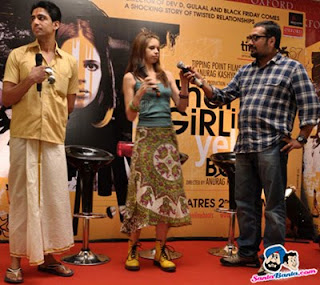
by Eileen Kinsella and Raj. S. Rangarajan
NEW YORK—Fall auctions of
Asian art got off to a solid start on Sept. 13 with
Christie’s sale of
South Asian modern and contemporary art, one of the fastest growing sections of these biannual art auctions in recent years.
Sotheby’s also did well with an opening sale of
classical Chinese paintings that more than doubled presale estimates.
While
Chinese ceramics and works of art continue to contribute a major portion of the overall series total—Sotheby’s had a $22.7 million sale while Christie’s two-day series was expected to bring between $19 million and $28 million—
Indian and southeast Asian art and Korean and Japanese art sales were considerably weaker. Excluding its ceramics and works of art sale results, Christie’s had realized $37 million for five sales, as
ARTnewsletter was published, while Sotheby’s achieved a total of $31.4 million in three sales.
The top lot at Christie’s modern and contemporary South Asian art sale on Sept. 13 was a painting by Indian artist
Maqbool Fida Husain. His large oil painting,
Sprinkling Horses, sold for $1.1 million compared with an unpublished estimate “in the region of $1 million,” according to a Christie’s spokesperson. It was bought by a U.S. collector. Works by Husain dominated the sale, accounting for eight of the auction’s top-ten lots. In all, the sale featured 13 works by the artist, all of which sold, and accounted for $4.2 million, or more than half of the $7.4 million total.
The overall presale estimate was $6 million/8 million. Of 111 lots offered, 77, or 69 percent, were sold. By value the sale realized 82 percent.
Other artists in the top-selling lots were
Tyeb Mehta, whose oil painting,
Untitled (Man vs. Horse), 1957, sold for $602,500, compared with an estimate of $300,000/500,000, and
Ram Kumar, whose
Untitled (Boy and Goat) oil painting, 1956, sold for $350,500 to an Indian collector, compared with an estimate of $200,000/300,000.
Other top lots by Husain included: the painting
Yatra, 1955, which sold for $932,500, nearly double the $300,000/500,000 estimate;
Untitled (The Three Graces), 1990, an acrylic on canvas that sold for $482,500, within the estimate of $400,000/750,000, to a dealer; and the oil,
Village Women, 1954, which sold for $338,500, compared with an estimate of $100,000/150,000.
The Christie’s Indian and Southeast Asian art sale realized $4.1 million for 203 lots offered, missing the presale estimate of $5 million/7 million. Of the lots offered, just 137, or 67 percent were sold. By value, the sale realized 59 percent.
The highest price was $482,500 for a bronze figure of
Chandeshvara, South India,
Chola period, 12th century (estimate: $ 400,000/600,000), and was bought by an unidentified institution. A U.S. collector paid $422,500 for a large
Imperial gilt and polychromed wood figure of Garuda, Tibeto-Chinese, 18th century. The price was well above the $120,000/180,000 estimate.
A sale of
Japanese and Korean art at Christie’s on Sept. 14 took in $3.8 million, with 172, or 59 percent of the 291 lots on offer finding buyers. By value the sale realized 41 percent, or less than half of the presale estimates. However, some prices at the top end of the sale were much better than expected.
These included an oil and mixed-media on board by
Park Sookeun,
Returning from the Market, 1965, which was estimated at $400,000/500,000 and fetched $722,500, and a
Meiji Period lacquer cabinet, ca. 1900, that sold to a U.S. buyer for $458,500, compared with an estimate of $300,000/350,000.
Sotheby’s sale of classical Chinese paintings on Sept. 13—the house’s first such specialized sale in over a decade—realized $6.5 million, compared with a presale estimate of $2.6 million/3.7 million. Of 81 lots offered, 71, or 88 percent, were sold. By value, the auction was 95 percent sold. The sale was led by
Running Script Transcription of an Epitaph, a painting by
Dong Qichang (1555-1636), that sold for $782,500, several times the estimate of $200,000/300,000. Also bringing a better-than-expected price was
Thatched Hut in Autumnal Mountains, 1743, by
Dong Bangda, an artist who was admired and praised by
Emperor Qianlong. The work sold for $386,500 compared with an estimate of $180,000/250,000.
Sotheby’s vice chairman of Asian Art,
Henry Howard-Sneyd, said the sale results “testify to the international nature of this market,” and said the house plans to continue them. “With this success, we look forward to classical Chinese paintings sales becoming a regular fixture of our New York Asia week sales,” said Howard-Sneyd.
The Chinese works of art sales at Sotheby’s on Sept. 14, were led by a gilt-bronze votive stele of
Buddha,
Northern Wei Dynasty, A.D. 471 that was bought by London specialist gallery
Eskenazi Ltd. for $1.02 million—higher than the estimated $600,000/800,000.
At the modern and contemporary South Asian Art sale on Sept. 15, M.F. Husain figured in five of the top-ten lots with most of them selling at higher-than-estimated prices.
Priyanka Mathew, head of modern and contemporary South Asian Art, Sotheby’s said, “of the M.F. Husain works that found buyers, many exceeded the high estimate, particularly works that have not appeared on the market recently.”
The total for the category was $2.3 million, with 59 percent of 87 lots sold, and 67 percent sold by value. The top lot,
Eglise, 1962, an oil on canvas by
Syed Haider Raza, sold for $362,500 to a private Asian bidder.
An oil on canvas by
Raja Ravi Varma,
Untitled (Himalayan Beauty), sold for $266,500 (estimate: $100,000/150,000).
In the Indian Miniatures category, the top lot,
Krishna and the Cow,
India, Punjam Hills, Sirmur, an opaque watercolor heightened with gold on paper, ca. 1820, by an anonymous artist, sold for $56,250, compared with an estimate of $30,000/50,000.











































